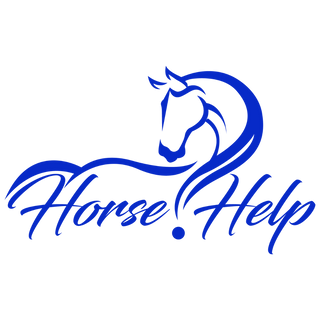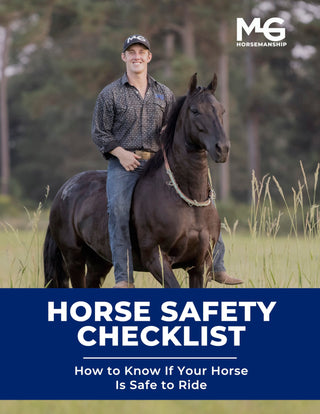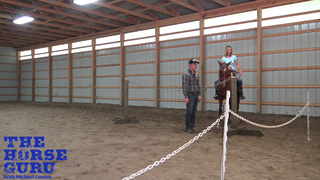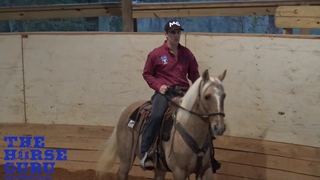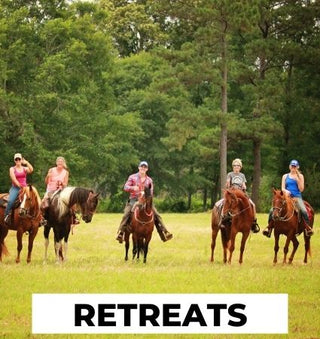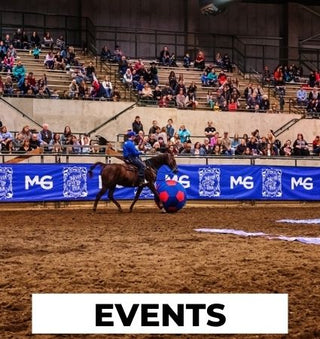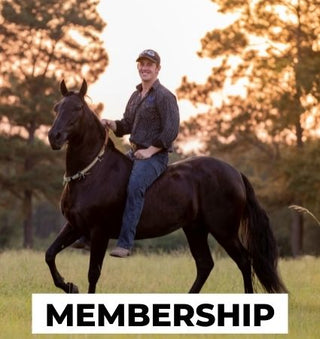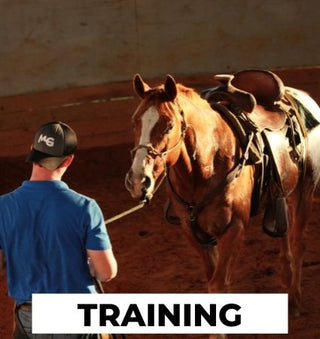Watch the Video Here or continue reading below!
Welcome to the final session of the September Horse Hop Challenge with Michael Gascon and his Mustang, Tarzan! This 12th-grade Q&A session dives deep into speed transitions, collection, and solving common riding issues—from downward transitions to straight-line control. Whether you're riding gaited or non-gaited horses, this comprehensive training recap is packed with practical horse training advice.
Understanding Downward Transitions: "Take Your Foot Off the Gas"
Q: How do I ask for a downward transition without using the reins?
Michael explains that a smooth downward transition starts with having a soft, responsive horse already moving forward in a circle. Rather than pulling on the reins, you simply take your leg off, like easing off a gas pedal.
Pro Tip: “Your legs mean go. When you take them off, it should cue the horse to slow down.”
Using circular patterns instead of straight lines makes it easier to regulate speed without resistance. If your horse is rushing, make your circle smaller to encourage a natural slow-down.
Getting Lazy Horses to Move Forward
Q: What if my horse won’t go forward?
If your horse is sluggish, soften their head and use energy-building exercises. Bring their face toward their hindquarters and increase motion. Use a crop (if needed) to encourage energy, then immediately give them freedom to move forward.
Training Insight: “Forward becomes their friend when you make staying still more work.”
Avoid arguing in a straight line—circling encourages forward momentum more effectively.
Controlling Shoulder Drops and Dive Turns
Q: My horse drops his shoulder in turns. How do I fix this?
Good horses are steered with outside rein and leg. Green or problem horses need a different approach: use inside rein to correct the dive.
Fix It Tip: Slide your hand down the inside rein and pick up their face toward the inside shoulder until they yield and lift it.
This builds on early training from “first grade,” where the horse learns to move their shoulder and hindquarters independently.
Tackling Speed with Loose Rein Riders
Q: My horse speeds up when I give them loose rein. What can I do?
First, ensure your horse can flex in motion. Then, drive the horse’s hind end toward their face using your calves—not your spurs—to shorten their stride and slow them down.
Gascon Analogy: “Think of the horse like a tube of toothpaste. You squeeze the middle to push the paste forward.”
This technique collects the horse without pulling on the reins and makes transitions smoother and more controlled.
Fixing a “Drunk” Walk: Straight Line Issues
Q: My horse weaves like they’re drunk. How do I fix their straight line?
Straightness starts with good circles. Use the "Power of the Circle" exercise to reinforce shoulder and hindquarter control. Correct inward or outward drifting with rein and leg pressure until the horse stays between your hands and legs.
Common Mistake: Trying to fix crookedness on a straight line without addressing poor circle control.
Improved lateral control leads to more accurate and balanced straight-line work.
Should a Horse's Head Be High While Riding?
Q: Is it okay for a horse to have their head up while riding?
Michael is clear: No. Whether English or Western, a high head means tension and disconnection. He always trains horses to keep their head low for softness, relaxation, and better control.
Why It Matters: “A dropped head releases endorphins and kills adrenaline.”
Even for gaited horses, collection and softness come first—head up only for specific gait transitions, and only when asked.
From Trot to Canter: Making Transitions Smooth and Calm
Q: How do I transition from trot to a calm canter?
Start with a soft, collected trot. Then, push the horse’s hip to the inside and pick up the inside rein. This position makes the correct lead almost automatic.
Step-by-Step:
-
Collect the trot.
-
Push the hip to the inside with your outside leg.
-
Pick up the inside rein and kiss to cue.
-
If no response, add pressure with your legs or spurs.
-
The moment they canter, release all pressure.
This teaches horses to respond to minimal cues and builds calm transitions over time.
Is It Different for Gaited Horses?
Q: Do gaited horses need a different training method?
The answer is no. The same principles apply. Gaited horses should be able to walk, trot, and canter calmly with their head down before focusing on gait.
Gascon Reflection: “I used to think they needed different training—but it’s the same process.”
Developing softness, balance, and collection applies across all breeds and disciplines.
Expecting Immediate Transitions: Too Soon?
Q: Should I expect instant transitions from a green horse?
Yes, with a caveat. Horses should learn early that transitions are expected—but your corrections must match their training level.
Gascon’s Rule: “Ask nicely, give a warning, then add pressure.”
Use your kiss as a pre-cue, then follow with leg pressure or spurs if necessary. The moment the horse responds, release all cues.
Final Thoughts: From Challenge to Mastery
This final Q&A session wraps up the Horse Hop Challenge with practical tools for advancing to higher-level riding. Whether your horse is sticky on the go, rushing transitions, or struggling with balance, these techniques form the foundation for softness, speed control, and precision.
Remember: it’s not just about making them go—it’s about helping them want to go, willingly and in balance.
